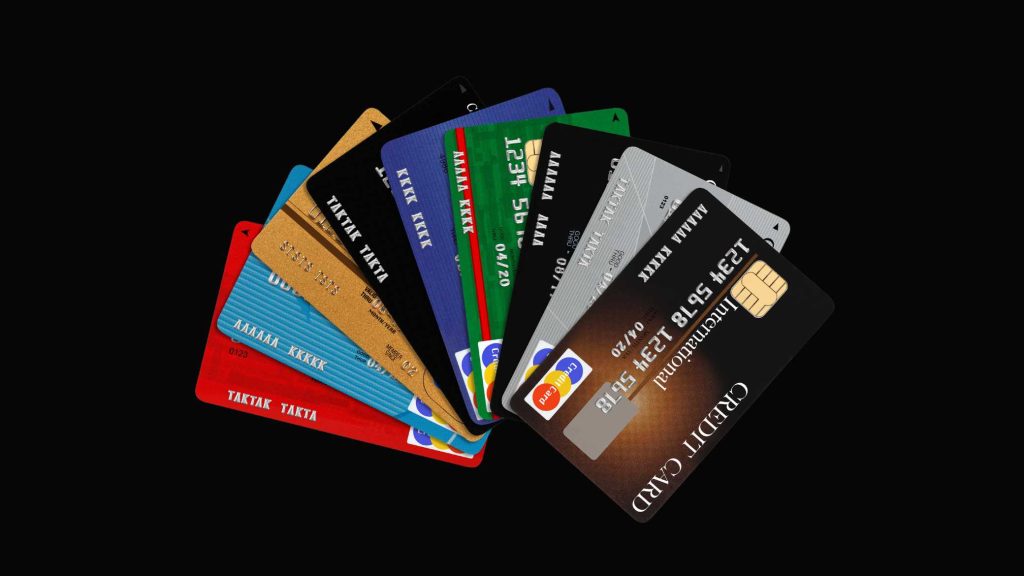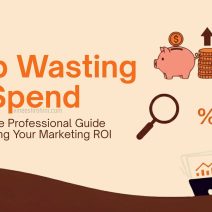Credit Card EMI: In today’s fast-paced world, credit cards have become an essential financial tool for many individuals. With their convenience and widespread acceptance, they offer a variety of benefits to consumers. One of the most popular features offered by credit card issuers is the EMI (Equated Monthly Installment) facility. This facility allows cardholders to break down large purchases into smaller, manageable monthly payments. However, despite its popularity, many users are still unsure of how credit card EMI works, especially as we move into 2025, a year marked by new trends, regulatory changes, and financial technologies.
Table of Contents
This detailed guide will take you through the fundamentals of credit card EMI, its workings, and the latest trends that are shaping this payment method in 2025. We will also discuss the pros and cons, how to use it wisely, and the important factors to consider when opting for an EMI plan on your credit card.
1. What is Credit Card EMI?

Credit Card EMI is a payment option offered by banks and financial institutions, allowing credit cardholders to convert their purchases into installments, which can be paid over a period of time. The EMI option is particularly useful for consumers who wish to buy expensive products or services but cannot pay the full amount upfront. Instead, they can pay a fixed amount each month until the total cost, along with applicable interest, is paid off.
In 2025, credit card EMIs have become even more accessible with technological advancements, better customer service, and more flexible repayment options. The EMI options available may vary from one credit card issuer to another, but the basic principle remains the same—convert the full purchase amount into smaller, manageable monthly payments.
2. How Does Credit Card EMI Work?
When a cardholder makes a purchase, they can choose to convert the payment into an EMI by following the process outlined by their bank or financial institution. This typically includes the following steps:
- Eligibility Check: Not all transactions are eligible for conversion into EMI. Banks usually have eligibility criteria, such as a minimum purchase amount or the type of item being purchased. Some banks offer pre-approved EMI limits for eligible customers.
- Selection of EMI Plan: When converting a purchase into EMI, the cardholder is required to choose the EMI tenure. This can range from 3 months to 24 months or even more, depending on the bank’s offerings. The longer the EMI tenure, the lower the monthly installment, but it also means higher overall interest costs.
- Interest Rate and Fees: Once the EMI option is chosen, the cardholder is informed of the interest rate (usually a fixed rate) that will be applicable on the outstanding balance. The interest rate can vary depending on the bank, the tenure, and the type of credit card. Banks may charge a processing fee as well, which can add to the cost of the EMI.
- Conversion to EMI: After agreeing to the terms, the total purchase amount is converted into EMI. The EMI amount is added to the cardholder’s monthly statement, and the cardholder must pay the EMI amount every month until the debt is fully paid off.
- Repayment: The EMI amount is due every month and will be included in the cardholder’s credit card bill along with the regular payments for other purchases. Missing an EMI payment can result in penalties, higher interest charges, and a negative impact on the cardholder’s credit score.
Also Read: How to use a Credit Card Smartly ? : Comprehensive Guide 2025
3. Key Features of Credit Card EMI in 2025
With advancements in financial technology and changing consumer demands, credit card EMIs have evolved significantly. Below are some of the key features of credit card EMI options available in 2025:
1. Flexible EMI Tenure:
In 2025, banks are offering more flexible EMI tenures, allowing cardholders to choose the repayment period that best suits their financial situation. Depending on the bank and the type of transaction, the tenure can range from as low as 3 months to as long as 24 months or more.
2. Interest Rates and Processing Fees:
Credit card EMI interest rates in 2025 are generally lower compared to previous years. However, they can vary depending on the tenure and the specific offer. Some card issuers offer 0% interest on select EMI conversions for a limited period or for specific purchases. However, processing fees still apply and can range from 1% to 2.5% of the purchase amount.
3. Instant EMI Conversion:
One of the major advancements in 2025 is the availability of instant EMI conversion. With most banks and financial institutions offering this option, cardholders can now convert any eligible purchase into an EMI plan instantly at the point of sale. This eliminates the need for additional paperwork or delays, making the process faster and more convenient.
4. EMI for Online and Offline Purchases:
Initially, credit card EMI was primarily available for large purchases at retail outlets. However, in 2025, the availability of EMI options has extended to online purchases as well. Cardholders can now choose to convert their purchases made through e-commerce platforms into EMIs as easily as they would for in-store purchases.
5. Pre-Approved EMI Offers:
Many banks and credit card issuers now offer pre-approved EMI options to customers based on their credit history and previous card usage. This allows cardholders to receive instant EMI offers with low interest rates and minimal paperwork.
4. Pros and Cons of Credit Card EMI

Pros of Credit Card EMI:
- Flexible Payment Plans: Credit card EMIs allow customers to split large payments into smaller, more manageable amounts, making it easier to budget and plan for expenses.
- Instant EMI Conversion: As mentioned earlier, cardholders can convert eligible purchases into EMI right at the point of sale, which adds convenience and reduces stress.
- 0% Interest Offers: Some banks offer 0% interest on select purchases, which can be a huge benefit for consumers who are looking to make a big purchase but do not want to pay extra in interest.
- Improved Cash Flow: By breaking down purchases into smaller installments, consumers can preserve their immediate cash flow while still enjoying the benefits of their purchases.
- Reward Points and Cashback: Some credit card issuers offer additional benefits such as reward points or cashback when using the EMI facility, which can provide added value to the cardholder.
Cons of Credit Card EMI:
- High-Interest Rates: While some banks offer 0% interest, many others charge high-interest rates, which can significantly increase the overall cost of the purchase. Depending on the EMI tenure, the interest charged can sometimes be higher than expected.
- Processing Fees: Credit card issuers typically charge a processing fee for EMI conversions. These fees can add up, especially for large purchases, and may sometimes negate the benefits of using EMI.
- Impact on Credit Score: Missing EMI payments can negatively affect the cardholder’s credit score, making it harder to get loans or credit in the future.
- Limited Offers: 0% interest EMI plans are typically available only for specific purchases or during limited promotional periods. Consumers need to carefully review the terms of each offer before committing.
- High Repayment Amounts for Longer Tenures: While longer tenures reduce the monthly payment amount, the total repayment amount can still increase significantly due to interest charges, especially if the tenure is extended.
Buy Now : Options Trading Master Class
5. Factors to Consider Before Opting for Credit Card EMI in 2025
Before opting for an EMI plan, it’s essential to consider several key factors to ensure it’s the right choice for you:
1. Interest Rate and Processing Fees:
Always check the interest rate and processing fees associated with converting your purchase into EMI. Compare the rates from different credit card issuers to ensure that you’re getting the best deal possible.
2. EMI Tenure:
Choose an EMI tenure that aligns with your financial situation. While a longer tenure will reduce your monthly payments, it will increase the total interest paid over time. Shorter tenures may be more cost-effective but could strain your monthly budget.
3. Your Credit Utilization:
Ensure that you don’t max out your credit limit by opting for EMIs on multiple purchases. High credit utilization can negatively impact your credit score and make it difficult to access additional credit in the future.
4. Pre-Approved Offers:
If you have a good credit history, look out for pre-approved EMI offers with low-interest rates. These offers can provide significant savings and reduce the overall cost of your purchase.
5. Your Repayment Ability:
Before converting your purchase into EMI, ensure that you can comfortably repay the monthly installments. Failing to make timely payments can lead to penalties and interest charges, affecting your financial health.
6. Conclusion

Credit card EMI has become a popular payment option for consumers in India, and with the growing number of credit card offers in 2025, it is more accessible and flexible than ever. However, it’s important for consumers to understand how credit card EMIs work, the associated costs, and the impact on their financial health. By choosing the right EMI plan, keeping track of repayments, and being mindful of the terms and conditions, credit cardholders can make the most of this convenient payment option.
Buy Now : Options Trading Master Class
Before opting for an EMI plan, it’s essential to consider factors like interest rates, processing fees, and tenure options to ensure that the decision fits your financial goals. While credit card EMIs can offer flexibility and ease, being responsible with your payments is crucial to maintaining a healthy credit score and avoiding debt traps.
Disclaimer: The information provided in this blog is for general informational purposes only and should not be construed as financial advice. Please consult a financial expert or advisor before making any decisions related to credit cards or EMI options.The views and opinions expressed in this blog are solely those of the author and are for informational purposes only. The content should not be construed as professional financial advice. Always consult a qualified financial advisor before making any decisions related to credit cards or financial products.








